Taking up the reins of the Rupununi
Young woman shares her experience as Toka’s youngest councillor
September 29, 2024



Young woman shares her experience as Toka’s youngest councillor
September 29, 2024


WHEN Falana Fraser es tablished Favour’s Hair Therapy, it was out of love due to her son’s hair condi tion. Today, it has become a thriving small business empowering her to realise her true potential with her own haircare and beard products.
oil, hair pomade, beard oil, beard wash and conditioner, edge balm, shampoo and conditioner, hair mist, beard and hair tools.
named business, Favour’s Hair Therapy, “promote(s) healthy and strong growth for all hair types”. It is a small business that started in the kitchen, and it had a trial period before the products were launched.
Uitvlugt but resides at Anna Catherina, West Coast De merara. She is married and has a three-year-old son. She explained that after the birth of her child, she noticed that he had issues with hair growth, and parts of his head were very patchy with no hair, and she wanted to change that.

is used in the production of the products, including essential oils.
Some of Dawn’s products produced locally and on the market
Fraser added that as a
detailed research, and af ter gaining knowledge, she experimented with some ingredients and made a hair oil from aloe, coconut oil and onion.
the home-made oil into her son’s hair/scalp, and within a short time, she noticed a difference: his bald spots were replaced with new hair growth, and soon he had a full head of hair which could be held in a ponytail.
her son’s once-patchy hair was replaced by full hair growth within three to four months, and today, his hair remains healthy and full.
Magazine that the positive results in her child’s hair process motivated her to make more of the plantbased hair oil and she began sharing it among family members.
within her family tree, and one day, her father encour aged her to utilise her new found skill to establish a small business to bring in an income to her home.
launched her products in which the hair oil infused


WHAT started out as being just helpful in the kitchen with her beloved mother eventually turned
small business, she operates from the confines of her home but has pick-up locations in the city and on the

As a small business owner, Fraser says of all her products, three have been FDA-approved and she is working to get all certified but is registered with Guyana Marketing Corporation (GMC), GCCI and, GSMA and the Small Business Bu-
She related that being

into a small business for Dawn Edwards Dickson, whose thriving business, Dawn Products, has 27 items on the shelves at the supermarkets.
registered with the authorities is an avenue for networking and marketing the products, and it is beneficial to have all your prod -
Dickson has always been passionate about cooking, and being in the kitchen is her happy place. She often finds herself there with her mother, helping out day after day.
She didn’t see it as a burden but developed a liking for making things from scratch, and when they had a lot of green seasonings such as fine thyme, broad leaf thyme, married man pork, celery, shallot and pepper, they would blend it together to make green seasonings to add flavour to the pot.
The mother of three told the Pepperpot Magazine that she loved spending time in the kitchen and would make meals for the family.
During that time, she taught all her children how to cook, and as word of her delicious foods got around the family, they began asking her to make green seasonings, assist in cooking, and season some meats.
Dickson reported that as a grandmother of six, she had a full house and would prepare meals for the family, and that made everybody happy.
aged while she handles the making of the 27 items from her very own kitchen.
event.
This agro-processor is from an Amerindian background and is also of mixed race. She lives in Aroraima, just near RUSAL, the bauxite company.
She met her husband-to-be in Linden, but she is originally from Lamaha Street, Newtown, Kitty, and her spouse is from Philippi, Corentyne, Berbice.
Explaining how she ended up living in Aroraima, Dickson added that she worked with a cousin as the manager of the kitchen of Universal Contracting Services for about eight years.
She noted that after that time, she was given the opportunity to have a spot to open a business near the bauxite company.
Dickson started her journey as a self-employed person with her green seasoning making and also did some catering on the side, as a side hustle.
Dickson told the Pepperpot Magazine that she is versed in cooking as well, and she is well-known in the community for 800 residents.
She reported that scores of people were genuinely interested in the products and even encouraged her to produce more. She was also complimented on her attractive packaging.
She pointed out that she makes three types of sauces for barbeque: chunky sauces with onions and garlic cuts, original and spicy sauce, and a mixed sauce for chicken.
Fraser stated that although all the manufacturing takes place at her home, she would someday like to have a separate facility for that purpose, along with a store to sell and display her products.
Dickson also makes a fish dip for fried fish and a fish and herbs powder along with a powder seasoning, which includes garlic, ginger, and onion paste, which can also be used for tea or meats, and a curry paste.
ucts certified, labelled, and well-packaged.
She stated that relatives and other family members began placing orders for her special green seasonings, and she obliged them, and that’s how her small business started.
afloat. She added that her vision is to produce top-quality, effective products and she would like to become number one in haircare and beard oils.
“Being in the kitchen with my mom really opened my eyes on how things can be done properly, and we came together to make many foods from scratch, and so did my seasoning business started. She inspired me to have my own business, instilled good values, and ensured I was confident enough. For that, I am thankful,” she said.
Today, Dickson has a store in her village, Upper Berbice River, Maple Town, Aroraima, which her husband man-
The mother of one stated that she is constantly inspired by customers and their reviews and testimonials of the products, and being a small business isn’t ‘all bed of roses’. It requires hard work, dedication, consistency and money to stay
“For the very first time, this year, I had a booth at the Emancipation Day celebrations in the National Park and I was pleased with the response I attracted through my products, which I am using as a motivating factor to keep going,” she said.
It took a lot of practice to master the art of making seasonings. They used to make green seasonings, store them in a five-gallon bucket, and distribute them in the kitchen when they had a catering
“I advertise my small business via social media, that is, Facebook and Tik Tok, and I often have to produce daily content to promote my products and I can say I have a few loyal customers. I supply a few salons, spas and barber shops, the Guyana Shop and Coss Cutter Supermarket with my products in which sales have been fair,” she said.
She also makes green seasonings in original, with extra onion, garlic and ginger for fish and meats, her very own Guyanese version of jerk seasoning, mango achar, pepper sauce in red and yellow peppers and mango sour based on orders.
Dickson explained that she developed her own packaging and labelling and got registered as a small business last June.
Fraser is the holder of a degree in Public Management from the University of Guyana and is certified in law from London University.
Her products are sold at the Guyana Shop, Robb Street, and she began her small business three years ago.
Being self-employed is quite empowering and she feels that there is no restraint in becoming successful in business through networking, marketing and consistency.
Dickson works alone for now, but when the work is overwhelming, she gets a “day help”, and she is hoping to expand her small business in the near future to employ others.
She would buy her green seasonings from farmers locally and in bulk and prepare them for the various seasonings she makes.
Fraser always represents her brand, Favour’s Hair Therapy, with her custom-made shirts and other products, which she proudly wears and display.
Not many would put a 22-year-old in the seat of community councillor, but the village of Toka has done just that with its youngest-ever councillor, Alena De-Mendoca. Born and raised in the Rupununi village, Alena is passionate about her home. Specifically, she is determined to help pioneer new opportunities for the young people of the region. Still studying and diversifying her skills, Alena says attention needs to be paid to the youth of the area, and she is happy to take up the mantle as the next generation of leaders in the Rupununi and Guyana.
The community of Toka is a small, beautiful settlement in the North Rupununi District of Guyana. Home to just over 200 people, Toka has gained notoriety for its serenity and captivating savannah landscape. Historically, the village has survived on farming and small trade. However, the community is changing leadership. Alena is, to date the youngest and only woman who sits on the council of her community.
She admits that there have been a few challenges, but she is happy to play the role she does. “I grew up in Toka. I was born and raised here. I went to Toka Nursery School and Toka Primary School. Then, later on, I furthered my studies at the Annai secondary school. I later furthered my studies in Georgetown and came back to Toka village to become a proud youth inspiring my
peers and our way of living,” she said.
Alena says her village of Toka played a significant role in why she was inspired to become a leader. Her childhood, although filled with all the beauty of the Rupununi, also had its challenges. After studying in Annai, she returned to Toka, where the villagers saw her potential as someone who could introduce new, fresh ideas. “I’m now a young councillor in the village and the only female councillor in Toka. I’m 22 years old. It was a bit of a challenge taking up the role, but my village - the youths, the ladies, the women, the men, the elders in Tokasee me as a young potential leader. We, the youths, are the leaders for tomorrow,” she said.
Sitting as not only the youngest but also the only woman on the council, Alena strives to have her voice and opinions heard. She shared that in the beginning, there were a few challenges in getting used to her role, but over time, she has earned her spot and continues to leave her mark on the community. As she explained, “It is a bit challenging as a young councillor and the only female one. I felt a bit odd among the males, but as time goes on, it’s a great opportunity to learn and gain more knowledge and skills from the elders.” She further added that her role in Toka is filled with daily activities, saying, “Because of my interest in the youths, I’m always there as a role model, always taking
part in activities. When they need help, I’m always there to call upon.”
But Alena has her eyes and inspirations set on the young people of the community. As a recent graduate from the Welding and Fabrication Programme of the Board of Industrial Training, Alena values the importance of knowledge and sees the education of young people, women in particular, as pivotal to the development of any community. “Some of the challenges affecting our youths in the community are that some of them never had a chance to go to secondary school or to finish school. The support from family, day-to-day basics of work - some families don’t have work and stuff like that to support their children in education and getting them involved in activities,” she said.
Alena is a champion for trade jobs. In a community where most of the economic activities are farming, trade, and cattle rearing, the introduction of new skills can greatly diversify the economy. This is why Alena undertook the Certificate in Welding and Fabrication. As she stated, “Some of the things that I would like to see in my community for youth development are to get youths engaged in training like mechanics, heavy-duty machinery operation, IT technicians, and such. A training centre in our village would be so nice because the youths don’t have anywhere to go and do these things.”
She further said the recent
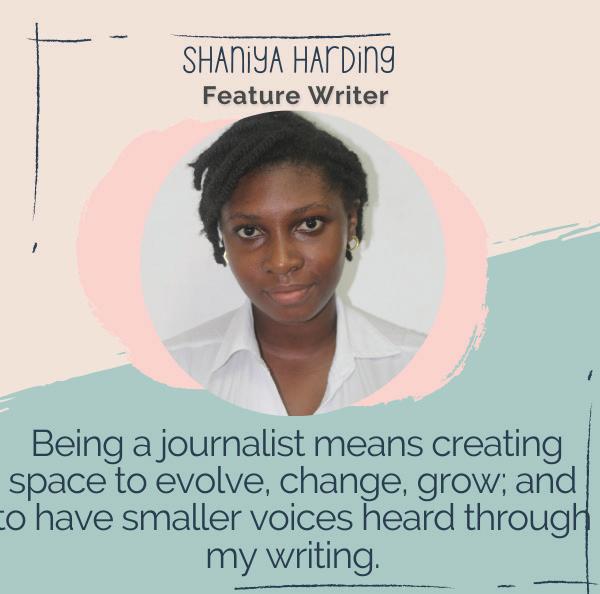

BIT training is a good place to start in educating more youths and pioneering new trades. “The BIT training program was a great initiative and opportunity for the youths in Toka. Despite not having a lot of youths participate, those who did take up the opportunity, and I see it as great potential for them be-
cause they learned new skills and gained new knowledge in how to do things,” she said.
Although Alena has a vested interest in healthcare, she believes that young people should grasp any new opportunities that they may find. She urges the young men and women of her community to
make use of their skills and to strive to step up to the plate, crafting a better standard of living for both themselves and their village. “These new trainees don’t just have certificates to style their walls. They have certificates to build a new life, to elevate themselves,” she said.

‘We
By Shaniya Harding.
THE Rupununi, a vast region in south-western Guyana, is a land of contrasts. Known for its sweeping savannahs, vibrant indigenous cultures, and the famous red dust that coats everything during the dry season, this area has long captured the imagination of visitors and locals alike. Historically, the region has been home to a vibrant system of cattle rearing, agriculture, and trade. These traditional activities have shaped the Rupununi and are often what visitors and tourists come to see and experience. But the Rupununi is much more than vaqueros (cowboys), ranches, and mountain ranges. It is a captivating place that is home to a tightly-knit community determined to continue the diversification of the region.
This week, the Pepperpot Magazine spent time talking to Norbart Salty, a teacher living and working in the community of Annai and one of the many men and women who are bringing the skills of the Rupununi to the forefront. Norbart’s story is a testament to the changing face of this region, where traditional ways of life are being complemented by new opportunities in education and community development.
Childhood in the Rupununi
Norbart is from Kwatamang Village, one of five satellite communities that make up Annai Village. It may be easy for newcomers to get confused and lose their bearings in a community like Annai, but as Norbart explains, Annai is bigger than most would imagine and is made up of five other communities, among them Bina Hill, where he works, and Kwatamang, where he lives. As he shared, “The five-satellite community has one land title. So, by right, we are all Annai Village residents. Most people do not know this and think that everything is just Annai.”
Norbart says his earliest and some of his best memories of the Rupununi are of his growing up in the community, a childhood he describes as traditional by all means. “I would say I grew up in a traditional way, meaning by farming, hunting, and working with my parents. I had to do a lot of chores. You have to wash the wheels, sweep the house, get the chores done, and so on,” he said.
The landscape of the Rupununi, with its wide-open spaces and winding rivers, played a significant role in shaping Norbart’s childhood experiences. He recounts a particularly memorable incident: “My dad and I were paddling in a small canyon. We were coming up from our fishing ground... It was around 8 or 9 o’clock in the day. We were trying to cross this particular creek, but the current of the water had more force. So, we couldn’t manage to cross it. Instead, our boat got turned off, and quickly, we got capsized.” This experience, while frightening at the time, is now a cherished memory that showcases the close connection between the people of the Rupununi and their environment.
Educational journey and community leadership
After completing school in the region, Norbart’s ambition for education became increasingly clear. His educational endeavours did not stop when he finished school, however, and Norbart furthered his education later in life. As an adult, he undertook a number of courses and became a major part of initiatives put on by the government. One of his biggest achievements, he says, was being able to represent Guyana
in Canada. “I got recommended from the institution to represent the young people here. And I went to Canada, which was an exposure for me. I went there twice.”
This international experience opened Norbart’s eyes to different ways of life, but also reinforced his appreciation for his homeland. “I even went to Brazil and had an experience with my aunt where it’s a different lifestyle. So, I saw how the city was there in Brazil,” he said. “But the beauty of our country will always be the most captivating thing I have ever seen.”
His education was the first step in becoming a leader in his community. “I also became a leader in my community. A senior counsellor. Not a Toshao, but somebody like a Toshao. I had a full-time service for my community,” he said. In Amerindian villages, a Toshao is the elected village chief, a position of great responsibility and respect.
Norbart’s big break came in the form of his current job as an educator at the Bina Hill Institute in Annai. The institute, established in 2001, plays a crucial role in providing vocational and life skills training to young people in the North Rupununi. It focuses on sustainable development, traditional knowledge, and modern skills that are relevant to the region’s needs.

Recounting his application for the job, Norbart said, “When there was an advertisement here, I applied. And that was one of the criteria – you must have completed ICT training. So, I got accepted. I was interviewed, and then, right away, I got a job offer.” Today, Norbart works as a teacher and community leader and is one of many persons seeking to pioneer education and capacity building in the region. Working alongside other institutes in Guyana, Norbart is seeking to diversify and maximise the skilled personnel in the region. “Currently, what I’m doing now – we have a programme with the Canadians. We’re working along with two other institutes: NATI (New Amsterdam Technical Institute) and ETI (Essequibo Technical Institute). We’re trying to elevate ourselves in capacity building, doing curriculum development, content delivery.” he said. This collaboration is part of a broader effort to enhance the quality of education in the Rupununi and to equip young
people with the skills they need to contribute to the region’s development while preserving its unique cultural heritage.
Norbart sees great potential in the Rupununi and Guyana at large, but he emphasises that achieving a better quality of life takes cooperation. “Well, I would say that let’s work together. This is Guyana. One Guyana. And we need to work hand in hand to develop our own function. I think we need a better life, and we have to work together to get it.” As the region continues to develop and diversify, individuals like Norbart are at the forefront, bridging the gap between tradition and innovation and working tirelessly to build a brighter future for Guyana.

By Shaniya Harding.
LAST week, Pepperpot Magazine highlighted a remarkable venture aimed at conserving the beauty of the Rupununi. This week, we shifted focus to conservation at the community level. Deep within the Rupununi, communities are more attuned to nature than most. These are the communities experiencing the direct impact of conservation efforts, and they are also the driving force behind these initiatives.
Asaph Williams, born and raised in Katoonarib, witnessed a significant decline in the rare and beautiful species he grew up with. Concerned for the future, Asaph and several community members took steps to protect the natural habitats of the region’s wildlife. Their efforts have already benefitted dozens of communities, and despite the ongoing challenges, Asaph and his team are determined to keep the Rupununi vibrant.
Asaph Williams: A Passion for Conservation

Asaph Williams is one of the founding members of the South Rupununi Conservation Society (SRCS) and currently serves on its executive board. A councillor in the village council of Katoonarib, he possesses a profound passion for wildlife, conservation, and traditional living. Known as a skilled bird guide, he attracts birdwatchers from around the globe who are eager to explore the region with his expertise.
Katoonarib, located in South Central Rupununi, is one of the most captivating communities in the area, aptly described as a “Bush Island.” This unique village is one of the few that features trees amidst the vast openness of the savannah, creating a diverse habitat that supports a richer array of species than its surrounding counterparts. It serves as a vital refuge for wildlife and a crucial resource for farming and hunting.
For years, the people of Katoonarib have fostered a near-symbiotic relationship with their local wildlife. However, Asaph noticed subtle changes over time. As the community grew, misconceptions about the impact of their activities on wildlife and ecosystems began to emerge. “There used to be a lot of wildlife here. People relied on the land because they didn’t have money. But as the population increased and people settled in one place, hunting pressure intensified, and resources became strained,” he explained.
Asaph has spent much of his life observing the wildlife in his community, and he has seen changes that many others overlook. Decades of pressure on natural habitats have taken a toll. “I noticed a lot of changes; there is less wildlife now. It’s not as easy to spot animals as before. People need more materials for houses, which is changing the forested areas,” he noted. Climate change compounds these issues, with unpredictable weather patterns affecting both the community and wildlife.
Faced with the decline of the natural beauty of his village, Asaph and his peers took action. “I started SRCS with discussions among friends and family about our concerns for disappearing wildlife. Twenty years ago, it was a dream we discussed over drinks. We began by engaging our family and friends holding meetings and workshops. This is how my community became involved in conservation,” he stated.
The SRCS employs various innovative practices that blend traditional knowledge with scientific methods to address the challenges posed by declining animal populations and climate change. One of the most surprising tools they
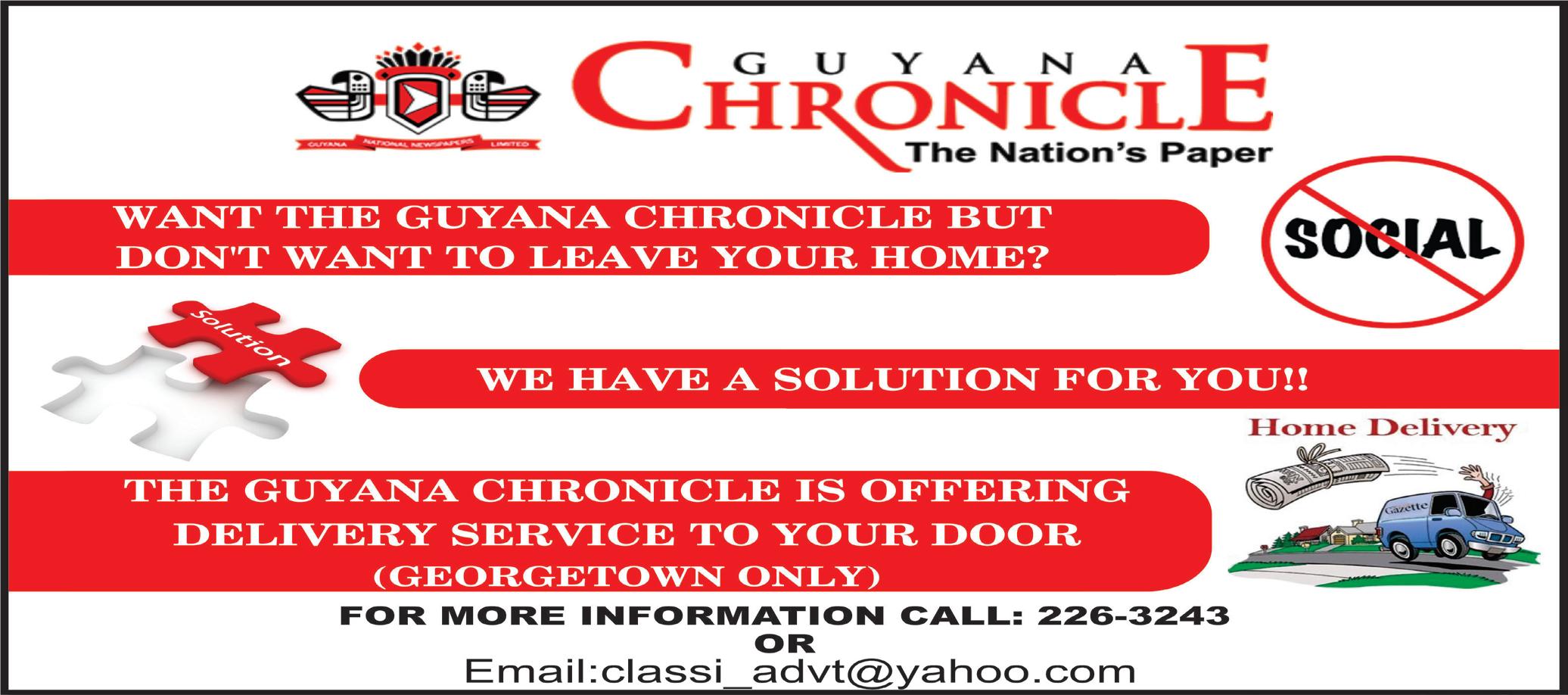

use is fire. “We use fire, which is often seen as destructive. However, we also use it as a conservation tool. We burn around our bush islands at specific times to prevent savannah fires from entering and damaging our farms or wildlife,” Asaph explained.
He emphasised the importance of understanding breeding seasons and identifying crucial habitats. “Our traditional knowledge helps us pinpoint these areas, contributing significantly to our conservation efforts,” he added.
Asaph and the SRCS have managed to balance traditional practices with modern conservation methods. Additionally, tourism has emerged as a critical tool in their conservation efforts. “Balancing modern and traditional life can be challenging, but tourism can play a vital role. The more visitors appreciate what we have, the more they value conservation as a sustainable way to generate income,” he remarked.
Since implementing conservation measures, Asaph has begun to witness positive changes in his village’s wildlife. “My village is starting to see the value of conservation. We are observing species returning—like peccaries and songbirds that had previously disappeared. With government support for savannah farming, we are easing the pressure on the forests,” he explained.
Despite these successes, Asaph acknowledges that challenges remain. “We live in a cash-driven world. Ironically, the more money people obtain, the more pressure it can put on the environment. Housing projects can encourage neighbouring villages to encroach on our protected bush islands, threatening the habitats we strive to maintain,” he shared.
As the world shifts towards a lifestyle increasingly disconnected from nature, Asaph remains optimistic about the future of the Rupununi. “I see Indigenous peoples respecting wildlife, taking pride in seeing animals thrive. Communities are becoming more active in conservation efforts, zoning areas like Katoonarib’s bush islands to safeguard them as vital refuges,” he said.
Asaph Williams and the South Rupununi Conservation Society exemplify the power of community-driven conservation. By blending traditional knowledge with modern practices, they have created a model that not only protects wildlife but also enhances the livelihoods of local people.
By Shaniya Harding.
LAST Saturday saw a creative dream come to life as a team of ambitious young men took a leap of faith, launching their first album titled “It’s About Time.” With its unique blend of reggae rhythm and dancehall energy, the group Timeless Music aims to establish itself as a pioneer of Guyanese music with a distinctive twist. The group is excited about the reception they’ve received and are ready to continue their musical journey. Speaking to Pepperpot Magazine at the album launch, the members expressed their satisfaction with their accomplishments, how far they’ve come, and their potential for growth.
Director of the group, Julian Dookum, explains the aim and inspiration behind Timeless Music: “We’re a foundation looking for young talent and pushing that talent forward. We want to make Guyanese music international. Our music reflects Guyana; every artist has their own story that is heard in the music, their own challenges living in Guyana. And that is heard in our songs.”
Brother duo Alexander and Nicholas Alfonso have been involved with music for several years. Alexander, stage name Alex, is the producer, while his brother found an interest in singing. Beginning in 2018, Alex would create the beats while Nicholas, or BNick, would write and record. Nicholas shares, “From being in the industry, I started noticing talent, other talent. And other youths who might not be able to afford studio time and stuff like that. Just like myself, because we couldn’t afford it. That’s how we ended up doing it by ourselves.” After gaining confidence in their skills, they began reaching out and found more resources and support before connecting with the other artistes of the team.
Singer Stephon Corbin, who goes by the name Stehigh, says joining Timeless Music has been a fantastic journey, and the release of the album is a dream come true. Having been in the music scene for quite a few years before joining the group, Stehigh believes Timeless Music is unique because of the effort and work put into it. He explains, “Creating this album was a lot of fun and hard work. The guys in the band really come to the studio at night and do their best.” He adds, “I am overwhelmed about the release of the album. I am happy to know that as a group, we have worked so hard, and it is going to pay off and we can now show it to the world. We can put on a good show without international artistes.”
Augustus Elocock is another member of the group who works as a technician by day and transforms into an artiste
by night. The shy twentyone-year-old shared, “During the day, I’m actually a GIS technician. But at night, I’m an artiste, too.” He further added, “Well, I started singing my whole life. And I actually started taking music seriously three years ago… It’s been the best musical journey I’ve ever had in my life- because of the effort being put in, the amount of time being put in. You know, and the love. You know, it’s family.”
Quenice Lorimer, also known as Lawva Don, packs a powerful voice and sees being a part of Timeless Music as his way of showing the world what he’s capable of. He states, “Being in Timeless is like the sign to prove that you could do this thing, and you will only have the facts to make it work. And, suddenly, I get to go away, so... It’s already been such a day, you know.” Quenice says he has always sought out a way to express himself, and Timeless Music allows him to do that. “This is one of my greatest accomplishments to be a part of Timeless Music. I have come a long way, and I have a long story to tell. I have had a lot of bridges to cross and hurdles to jump. So I am proud of myself,” he added.

Keshawn Mcbean, known as RGK, brings versatility to the group. He explains, “ I do many different genres - I try to be versatile. You know, like R&B, hip-hop, dance, a little bit of Afro and everything. But the difference is that it’s just like a certain kind of essence that anybody that starts listening to the music, immediately they will get trapped.” RGK’s unique style adds another layer to Timeless Music’s diverse sound.
As Timeless Music steps into the spotlight with “It’s About Time,” they’re not just launching an album; they’re introducing a new era of Guyanese music. With their blend of talents, genres, and experiences, these young artistes are poised to make their mark on the international music scene while staying true to their Guyanese roots. Their journey is just beginning, and if their debut is any indication, the future of Guyanese music is indeed timeless.




A COLLEAGUE recently suggested that Standard English should be our first language. There is what may be interpreted as a duel between Creole and the English Language we had to learn during Slavery and after to survive and prosper in an apparent changing world. Well, “Eh, is wuh’s duh? Ah seh duh cause ah think ah should
Let’s do a flashback: Back in the Fourth Standard, Form One onwards, two textbooks were rooted in passing English or Literature, such as any subject that required compositions, etc. The Students Companion, and the First Aid In English. These books are still necessary for many adults.
Knowledge of formal
Alien science that created us. This discourse possibly led to reading on the subject and exploring different possibilities, which led to the strange book titled ‘The Selfish Gene’ going down another road.
We do need the impetus to explore. It can come naturally to explore, but that will not be the majority, because there

respond to meh friend, that is nah that Creole is de issue is that nowadays awe ent reading fuh find out nothing.” What I mean by reading is the fact that the in-depth quest to clarify and analyse any subject matter across the timelines of its event is not considered a purpose. Therefore, two to three-line definitions are presumed enough to execute lengthy crosschecking. Raise this issue and you will confront a response like “Duh’s not wuh happening now.” It’s stupid, yes, but they live on the quick drama of their smartphones and tablets. Believe me, when I mention ‘Tablet’; it’s a tablet indeed. They get high on it. Socially, we’re not challenging them to explore. Our society is in shambles.
written language is indeed the principle of understanding proper composition to survive. I’ve sympathetically contributed to this bad habit of helping to compose a thesis, here or there, on a subject I had a working or exploring awareness of. But there are lazy and entitled ones who can be a burden rather than a late enthusiastic learner. But decisions are made on impulse. What are the tools that will make this generation interested in reading and cross-reading to acquire clarity? We allow men who hosted school debates to dwindle away based on pointless bias reasons. But for many of us, looking back, it was young folks in the early dawn of their working lives debating on East Street about whether it was God, Evolution or
are houses without bookshelves. Eric is not wrong. The language that Science papers are written in is English, whether it’s American or British. In our debate, Creole is going to be there because Creole is a combination of several Colonial Languages from the African tribes brought here and then enslaved, and those whom legends and science claim had a presence here, and with sprinkles of the indentured and Amerindians, who were here and those who came after. Creole is ours, for example, we define the predicament of the unreasonable man who gets... a “Jumbie lash” that “karma, is fuh real.” This seven-word statement encompasses three diverse cultural languages, En -
glish, African, and East Indian, that everyone understands clearly. The fact is, regardless that Creole is an accustomed dialect, we
must comprehend that the language of the sciences, legal contracts, the language our laws are written in, and our dissertations must
be written composed with, must be well understood, and with that it’s Standard English.



For most young people, life is a blissful experience. Every single day is a fresh chance to see or learn something new. Yet, even as we travel through this seemingly joyful and invigorating era of our lives, many of us happen to lose ourselves to stress and boredom. We stop enjoying life before it really even begins.
We share similar experiences with our coworkers and classmates. We seem to have the same responsibilities and opportunities as those around us. However, while others seem to absorb these experiences to become happy and successful versions of themselves, some of us suffer and struggle just to go through every single day. What seem like small hurdles for others become great obstacles for us. Activities that bring genuine excitement to others only seem to bore us. Nothing ever feels good. Eventually, this feeling of stress and general unhappiness metamorphoses into depression and anxiety. As we undergo all of this, we will discover that the truly frustrating part of this phenomenon is that there does not seem to be a definite cause for it. So, how exactly do we fix a problem whose cause we cannot determine?
Perhaps, the answer lies in the relationship between peppers and parrots. Peppers are spicy because they contain a chemical called ‘Capsaicin’ that induces a hot, tingling feeling when consumed. Pepper plants initially developed the presence of Capsaicin, which is most likely to deter animals and insects from eating the fruits and damaging them before they are mature. For the most part, this method was effective. However, in the case of birds, such as parrots, the Capsaicin has no effect. In fact, parrots enjoy many varieties of peppers as a delicious snack! The reason they can eat peppers with no effect is that they do not have many taste buds or a good sense of smell. This means that they are simply incapable of feeling spice.
This is particularly interesting because birds, like parrots, are the main group of organisms that are meant to spread the seeds of pepper plants through their droppings. Is it not quite intriguing that the only creatures that are capable of eating the pepper fruits are those that are meant to help it survive?
The experiences in our lives are a little like spicy peppers. We may one day look at a flock of parrots that are enjoying pepper fruits and begin to believe that we should be doing the same. So, even if the peppers burn us and make us uncomfortable, we continue to consume them with the hope that someday, we, too, would learn to enjoy them in the same way that parrots do. Unfortunately, no matter how hard we try, the peppers will never stop burning us because we are not meant to be eating them at all!
As we go through our lives, we convince ourselves to do several things without understanding why we do them. Many of these things not only fail to be useful to us but even begin to hinder our ability to be happy and productive. Yet, when our minds and hearts recognise that we are doing things that are unhealthy, we still force ourselves to continue down the same path. Because we observe colleagues or classmates who are finding success and happiness, we trust that we, too, will find the same. If we find that the things we do every single day do not make us happy just to do them, then we might not be doing the right things at all.
Peppers do not burn parrots because they are meant to be eating them. Life should not be stressful if we are fulfilling the purpose that we are meant to. We are all different from each other, so we cannot be meant to do the same things. Filter out parts of your life that prevent you from feeling productive and fulfilled, even if they seem to be helpful to others.
Then, when faced with those things that you just have to go through, even if it feels like you are not meant to be doing it, treat them like the peppers we add to our food. Although pepper in our food still has its characteristic heat, it makes the food all the more enjoyable. After all, what is life without just a little spice?

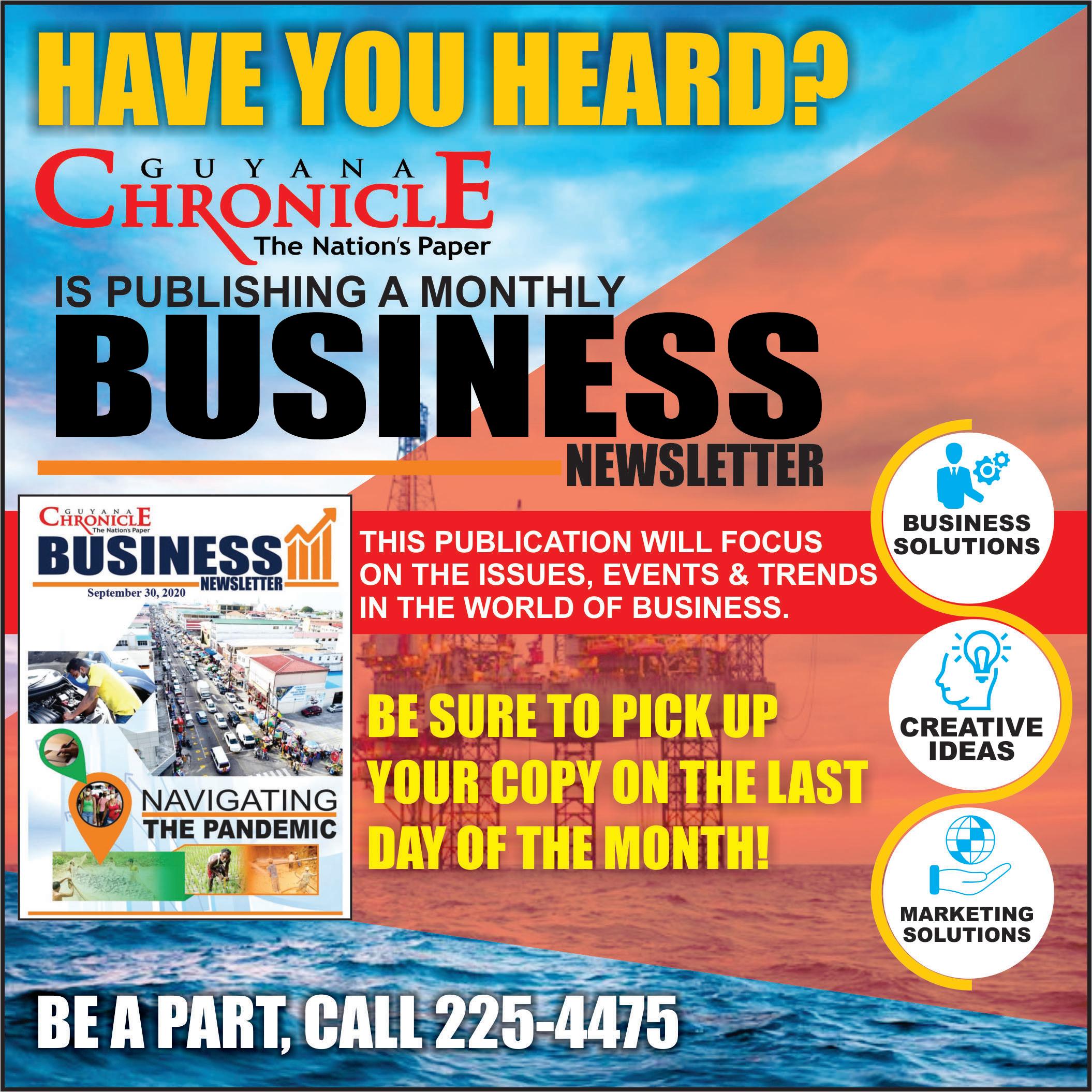













Her name is Sajanie.
An old woman living her last days in a retirement home.
For her, it was unexpected.
SHE stood at the water’s edge, her torn dress swirling around her legs, a lone figure shrouded in the shadows of the night. A foreboding silence hung over the beach as the tamed wind gently lifted the dark tresses of hair falling over her face. A pretty face it was, streaked with sand and dry tears.
She had never thought that this place would be her final home since, in life’s journeys, she had faced many challenges but still stood strong for home and family.
A young girl in pain, alone, at the beach in the dead of the night.
She missed her home, the warm tones and fragrant scents, watching the timeless splendour of the sunrise and sunset from her porch. But most of all, she missed her beloved family, their
What happened to her?
The deep, haunting look in her eyes, the ashen face and colourless lips told a story of something cold.
unfolded the night before on the sandy beach. No one heard her cries, her pleas on the deserted beach and when they were gone, a young body was left on the sand, helpless and broken.
no footprints in the sand, for late that night the pain had ebbed away like the tide, and one last tear trickled from her eyes as she took her last breath.
friends, whom I trusted to take me home.”
shed no more tears, but she was not going into the light, not now. It was not her time. She did not have to die, not that way. Not for someone who revered God and had good values. She was a classical dancer and a teacher, recognised for her talent and as an educator, it was all wrong, her death.

friends, Aruna and Preity, that night after the cultural pro gramme, but a late change of plans by them to go out with their boyfriends caused her to ride home instead with two male friends she knew very well. The other two boys she had met only once at a wedding reception, but they seemed like nice guys. On the way home, she had a bottle of fruit drink, and a slight drowsiness overcame her, which she thought was tiredness, but it must have been something else. She became dazed and did not notice the detour on the lonely road to the beach that would be deserted at that hour.
voices, the laughter and conversations, their celebrations and hugs.
It had grieved her heart and made her sad being away from them, just waiting and counting the days for special visits, and in that lonely period of her life, she had asked herself the question, “What did I do wrong for this to happen to me?”
Betrayed by those who masqueraded as friends.
“Why? Where is my wrong?” were her soundless, agonising cries.
She looked up at the heavens and continued to cry, “You are my God. I believed in you. Where were you when I cried for help?”
As time went by and the seasons changed, she could not find the answer until a mysterious male nurse came to work at the home. She had liked his warm personality and gentle voice as he pushed her around the garden in her wheelchair. The lovely blooms had given her a moment of peace and a little elation, something she hadn’t felt since she became a resident of the home.
The beach was silent as the lone figure sat with her head bent. There was no place in the world for her anymore.
“I died,” she moaned, “My mother and father have lost their little girl.”
On the nights when she couldn’t sleep, he had spent long moments talking with her. He had helped her to go back to her past to find the answer to that one question that still hounded her mind, and in doing so she had managed to unlock a door in her mind that had been closed for decades.
A fisherman had discovered her body lying on the sand early the next morning. She stood there, unseen in her spiritual form, watching as the police cordoned off the area and canvassed the scene for clues. Word spread, and a crowd gathered, shocked and angry that such a horrible thing had happened to a decent young girl.
What she had found behind that door had shocked her and left her with deep regrets. A baby boy she had had when a young woman and whom she didn’t want had died minutes after birth. She had moved on in life, forgetting about him and giving her all to her other children.
She had watched helplessly as her father, shocked beyond words, sank to his knees and broke down, crying as he looked at her lifeless body.
“Oh God,” she cried, “Is that the sin I am paying for now?”
The male nurse had looked at her with pity for the tears she cried now for that baby she didn’t want, then he had smiled and said to her,
He had looked up at the heavens, his hands clasped, his voice breaking, “Why…why God? Why, my little girl?”
“I am happy that you remembered so I can be released now from the bond that tied me to you for all those years.”
When the hours had gotten late last night, and she hadn’t yet come home, her phone turned off, and her mother experienced a deep feeling of dread, her father, brother and cousins had begun searching until daylight.
She had looked at him puzzled, “What are you talking about?”
“I am your baby boy who died just after birth.”
No one could console her father. What should she tell her mother, who was waiting at home battling her fears?
A soft light glowed over him as his true self was revealed to his spiritual form.
Even the heavens trembled that day at the mother’s cries for the child she had brought into this world, a blessing from
She gasped in shock, and her trembling hands reached out to him, “I’m sorry, son.”
He smiled with that same warmth and said with gentleness,
God.
“Don’t be, mother, it’s the long gone past. I am happy I could have helped you. Now your mind will be at peace. I will wait for you on the other side.”
How, then, did evil interrupt her life?
No one had an answer.
All the media houses carried the story, and shock rippled through her community and the nation. The boys who had given her a ride home were held for questioning, but they all stated that they knew nothing.
He had turned and walked away into the glow of light and she had laid back slowly in bed, her mind not vibrant anymore, but days later, she managed to process that shocking revelation.
Their story was that she had received a phone call on the
“That’s why the nurses never knew who I was talking to,” she voiced weakly, wiping away her tears.
She closed her eyes to sleep, free now from the burden of that nagging question, a feeling of warmth surging through her body and she sighed, “I am ready whenever you are, Lord.”
way home and asked them to stop for someone else to pick her up.
She raised her head slowly and stood up, looking at the heavens, a burning passion of pain and anger in her voice, “I will not come home, not until I have destroyed the monsters who took my honour and my life.”
She stretched her arms out, and from the abyss of death and darkness, she screamed, unleashing fury and agony.
“I call on dark forces to lend me the evil power to destroy those spawned from evil, and for that, I will give you my soul.”
The sky rumbled, the water became restless, and the wind howled as she waited under the mangrove trees.
One night, two nights passed, then on the third morning, just before the break of dawn, as the high tide rushed across the sand and the wind whistled shrilly, four black crows appeared from the far horizon. She stood up, her coal-black eyes watching as the crows drew closer and closer and alighted on the mangrove trees. Her wait was over.
The dark abyss had answered her call to fight evil with evil.
“For each new day, now,” she vowed, “stones will bleed.”
A wake had been going on at her home, and friends, family and people from everywhere had been attending to express their sympathies. There was no comfort, though, to her deep-
That day came on a warm September morning, a soft wind blowing and she whispered ‘Goodbye’ to the mother bird and her chicks in the tree outside of her bedroom window.
ly grieving family, who just couldn’t process the fact that she was no more in their lives.
On the day of her funeral, she went back home in her spiritual form to comfort her family and to confront her killers. They would be in attendance, she knew, amongst the huge turnout of mourners.
“I am going now. Life continues with you.”
She took her last breath that beautiful morning, the old woman who had grown weaker over the year but with a happy feeling in her heart. It was, for her, a new beginning, for her soul was free to sail over the seas, fly with the wind and dance among the clouds.
All her friends were there, those who were true, who had regrets. She saw their tears, heard their shocked whispers as prayers and songs eulogized her life. She stood amongst her family, holding her mother’s and father’s hands, hugging her brother and sister, wiping their tears.
She met her family of departed souls who had been waiting for her with open arms, but she did not see her son.
“Did he not wait for me?” she
But they were not aware of her presence. Her mother, though, seemed to sense something and whispered, “Aryana?”
The family turned to look at her mother, and she broke down crying, “She’s here with us. My baby is here.”
The father hugged her, helping her to stay strong as the highly emotional services paid tribute to their young daughter’s life and honouring her departed soul to guide her on her final journey.
A cynical smile played on Aryana’s lips as the viewing began, and she whispered, “It’s showtime.”
Aruna and Preity just couldn’t stop crying. Such were their regrets for leaving her that night, but the fury burning in Aryana could not forgive them, so she threw out the fresh roses they brought for her. There were loud gasps from those close enough to see what happened, and the two friends stepped back, scared. Her killers were also approaching her coffin bearing red roses, and she called upon her emissaries of the dark world, “It’s time.”
The sight of the black crows, their loud cawing and wild fluttering wings, created a frightening scene as they flew circles around her coffin, then among the mourners who scattered to avoid the vicious birds. The birds were gone as fast as they came, but left in their wake were fear and shock. Never had anything of that nature happened at a funeral service. What could have triggered something so ominous was the burning question.
Aryana watched her killers hurriedly leave and smiled, cold fury in her eyes, “It’s just the beginning.”
To be continued…


THIS column will again touch on Mangroves because of its importance historically, socially and economically.
When the Dutch colonisers first visited Guyana in the 17th century, they observed that Mangroves were growing along the entire coast, in some parts so thick that they could
ing, they began to move their settlements to the river banks towards the end of the 18th century. In 1815, when Essequibo, Demerara, and Berbice finally ceded to Britain, they were united in 1831 to form the colony of British Guiana.

The British developed their colony much faster than the Dutch. Like the Dutch, they empoldered their agricultural land and built sea defences, but it was only in the 20th century, with the growth of Ecological Studies and a deeper understanding of the environment, that the full importance of
The United Nations recognised the importance of mangroves by declaring a Mangrove Day each year with a relevant motto. In this year 2024, the motto is “Mangroves matter. Safeguarding our Coastal Guardians for tomorrow”.

Though this motto identifies the most important function of mangroves, that is to guard against the flooding by the sea and tidal waves and make the soil less fertile when it would have been impregnated with salt; other positives emanate from mangroves.
--Can it be revived?
Mangroves provide a home for bees as well as feeding grounds since a large number of flowering plants grow among the mangroves. When hives are established in the vicinity, they provide bountiful honey supplies. Consumers much value mangrove honey.
IN every country in the world, there is always a building or structure that the nation regards as iconic, and to which there is a deep psychological attachment. In India, there is the Taj Mahal. In England, the Tower of London, and in the USA, the Statue of Liberty, while in Guyana, it is the Stabroek Market. Every country maintains its iconic structure with care and respect, but Guyana, quite bizarrely, has consciously allowed its icon to fall into ruin, and the culpable party for this disaster is the Mayor and City Council of Georgetown (M&CC), which has custody of the building, and uses it as a revenue earner. The citizens have been complaining for decades, but the M&CC has remained passively insensitive, merely collecting revenues from the market, which is its second-largest source of revenue, and not spending any of the funds on its maintenance. With such backward management, ruin and bankruptcy were inevitable.
Mangroves are a carbon sink and enhance Guyana’s efforts against climate change. They provide a livelihood for many coastal communities, one food resource being the varieties of fish that live among the mangroves. They are an ecotourism attraction with the rich biodiversity that mangrove forests offer, and the Guyana Tourism Authority and the Ministry of Agriculture are cooperating in this development. Mangrove restoration and preservation support several sustainable development goals (SDGs), to the degree that Guyana is seriously committed to achieving them.
This malaise of the M&CC began to occur only after the 1950s. Before the 1950s, the M&CC was one of the best-managed institutions in Guyana. The town was famous

At the recent function of unveiling the plaque at the Kingston Seawall Esplanade in commemoration of International Mangrove Day 2024, the Minister of Agriculture summarised the importance and impact of Mangroves: “Mangroves are our coastal guardians, vital to Guyana’s environmental and economic health”, he said, “they act as natural barriers against coastal erosion and surges, protecting our communities and infrastructure. With over 23,000 hectares of Mangroves, they support fisheries, livelihoods, and food security and provide habitats for diverse wildlife… Mangroves are important in sequestering carbon, enhancing efforts against climate change as outlined in Guyana’s Low Carbon Development Strategy
The State has developed a 10-year National Mangrove Action Plan and an Inter-Agency Committee dedicated to promoting sustainable Mangrove management, and over 500 hectares of mangrove have been restored. Since 2010, over $1.9 billion has been invested in mangrove preservation and restoration, and regular injections of money are expected to be made as required. For example, $275 million has been allocated this year to rehabilitation
as “the Garden City”, and it was clean and well-kept. The LeRepentir Cemetery, for example, was like a well-kept park. The M&CC’s finances were so well managed and healthy that whenever it issued bonds, these were immediately taken up. Purchasing the structure of the Stabroek Market from Boston in 1879 is an example of its vision and business acumen.

The structure of the market was shipped from Boston, and its reconstruction began in 1879. It was opened on November 1, 1881. The Contractor was Nathaniel McKay. There are several interesting features in the Market: The concrete floor of the market gradually slopes from the front, bordering Water Street, to the wharf on the
FROM PAGE XVI
river so as to accommodate quick cleaning and washing.
The original stalls were built with shutters and wooden floors, and could be secured when the owner was not present. The roofs were built in step form, with jalousie openings so as to keep the market cool and well-ventilated.
The roof area is 2 1/2 acres. When electricity came to the colony, the same kind of street lighting was used in the market up to post-World War II, and provided good lighting for all parts of the market, for it was open for business until 8 pm.
The sonorous bell of the Market Tower with its large clock, could be heard over most of the town. The clock itself was serviced by a Dutch-descended family, the Oudkerks, until the 1950s. A spiral cast-iron stairway painted in silver led to the Tower, and going up to the Tower was severely restricted and regarded as a great privilege to be permitted to do so.
The passageways between the stalls were wide to allow for the comfort of shoppers and the easy movement of goods going to the various stalls.
There were special constables who were well-addressed and equipped and always on patrol, so that there was no crime. There was a team of “scavengers” or cleaners who swept the entire market twice per day; this Victorian name for cleaners was used until the 1960s. The drains were kept clean, and there was never flooding. The Fire Brigade flushed out the market every Sunday, using the Middle Gate to enter, since the front passageway was not encumbered with stalls.
Most of the original stallholders were Portuguese, with a few Syrians and fewer Indians and Africans. Having a stall in the market was a prestigious thing, and many of the large Water Street firms, such as Bookers, and Wieting and Richter, had stalls there.
In the 1950s and 1960s, the Portuguese and Syrians left the colony, and the present groups succeeded them as stallholders. The stallholders of the past knew each other, and there was a camaraderie among them.
The market was governed by “the Clerk of Markets”, whose office was in the centre of the market, high enough for him to see the top of every stall. The Clerk listened to complaints and requests from stallholders, ensured the rules of the market were obeyed, was in charge of the cleaners and constables, and collected rents for the stalls.
One such clerk who served for nearly 50 years was the legendary Jão Antonio Machado Pacheco, whose relatives were owners of pawnbrokeries and jewellery shops. He was a wealthy man in his own right.
Under J.A.M. Pacheco’s clerkship, the Stabroek Market had a golden age, which began its end with the March of Democracy in the 1950s. With the March of Democracy, the franchise was given to every citizen of 21 years of age, and they elected persons to serve as M&CCs who were quite different from those of the past. Past M&CCs consisted of persons who were established in the learned professions, and successful business people who never received or required any stipend for their service, who were trained in management and financial controls, and who employed persons with merit as the main criterion. The new MCCs did not have managerial skills comparable to those of the the past, and they were slack in financial controls, resulting in theft, embezzlement and failure to do regular audits, and this was mirrored in the recent story of Stabroek Market.
As we pointed out above, the M&CCs from the 1960s were elected by universal suffrage, and were very different in background and education than in the past. The first thing they did in the market was to appoint Clerks and staff who were not suited, and this is reflected in the newspapers of the time, which wrote of the corruption of the Clerks, the non-functional cleaning staff, who did not clean the market including the toilets, and who permitted garbage to be accumulated in various parts of the market, especially at the
back. Robberies of stalls and shoppers were unknown in the past, since the Constabulary performed. The new-style Clerks, in their drive to collect drawbacks and to increase revenues, permitted new stalls in the passageways, thus narrowing them, and in any other spaces, as for example, the four-feet storage areas behind the original stalls were seized and given out as stalls. This accounts for the present congestion in the market, which makes it a fire hazard, prevents cleaning, obstructs ventilation, and takes away from the comfort of shoppers.
The drains in the market are never cleaned, and this, combined with the congestion, causes flooding, and the floors in many parts of the market to be permanently wet.
The Market Tower and Clock need to be repaired. The M&CC, through the Clerk, only concentrates on collecting revenues, but spends no money on maintaining the structure, and this has resulted in leaks and parts of the roof collapsing from time to time, as recently occurred in June last.
The Central Government has been willing to assist the market, and has rendered much help in the recent roof collapse. Though the market could not recapture its glorious past, there is much room for its revival, and its rightfully regaining its iconic status, but such revival could only be achieved with proper and expert management.



FROM PAGE XV
wondered.
She looked around but did not see him, and her mother asked curiously, “Who are you looking for?”
“My son.”
“None of your sons have died,” she stated.
“Yes, the one who died just after he was born, the one I didn’t want.”
The family members all looked surprised and her eldest sister asked, “So, how did you meet him?”
“He came to me when I was in the nursing home.”
That, of course, left everyone perplexed and Sajanie laughed a little.
“Strange, the way things happen.”
Not a moment too soon, she felt a sudden pull and found herself in a cemetery.
“What am I doing here?”
Her question was answered when a figure stepped out from behind an oak tree and she recognised her son from his visits to the nursing home. He reached out his hand for hers and said, “So you’re here now with me.”
She smiled and nodded but then she saw the little tomb he was standing near to and she realised that was where he had lain as a baby. The guilt she thought had gone away came back with a rush and she said quietly, with a tremor in her voice, “I’m so sorry, my son.”
He shook his head and said, “The past matters no more, Mother, for you’re here with me now, a new beginning for us.”
It took a little while for her to compose herself, then she smiled and, taking his hand, said, “If there’s time, I want to visit places that were a special part of my life on earth, before ascending to our new home. Will you come with me?”
“Sure.”
And like a gentle whisper of the wind, her ageless soul went back to her birth home. The old house wasn’t there anymore but the memories of a little girl growing up were still there; the joys, laughter and family. She went to her old school, which had been rebuilt but was on a silk cotton tree in the schoolyard, and her name was still carved.
At the cinema, she stopped for a longer reflection and expressed softly, “Those were wonderful days.”
He watched how happy she was visiting these old places that held such beautiful memories, memories that will now be archived with loved ones, for she had left that world.
He took her hand and asked, “Are you ready?”
She nodded her head and walked towards the light, holding her son’s hand – a happy ending for the old lady who had given everything to home and family in life’s journey but was left alone with nothing.
Now, in this new beginning, she had everything.


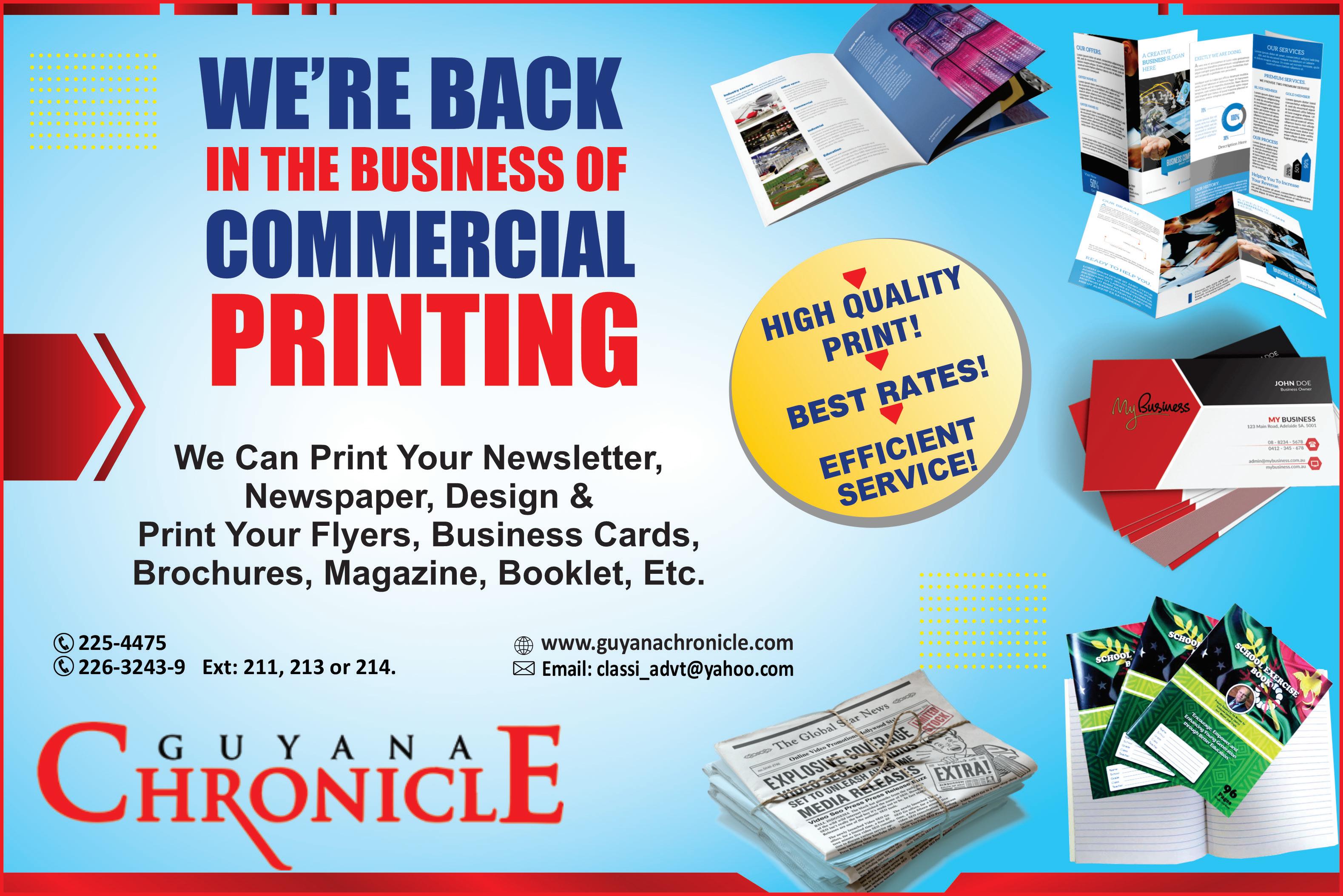




ABUSE comes in many forms. In fact, more people are now recognising different forms of abuse aside from the normal categories. One such example is “self-abuse”. Reading the caption and this first paragraph might sound strange at first. Trust me, even as a trained professional, I also had to adjust to this concept when I first heard it. We widely consider the abuse others commit to others, but have we ever stopped to consider the abuse people do to themselves? It is easy sometimes to pinpoint bullies or abusers, but what happens when the abuser is, in fact, your inner self and thoughts?
“Self-abuse” means exactly what it implies. It is when someone intentionally causes harm to themself. Most times, people use the term “self-harm” to describe Self Abuse. I, however, realised that “Self Abuse” indicates a wider awareness and scope of abuse. Self-abuse is done most times as a coping mechanism. It is done to express overwhelming

WHEN you are defining the term “abuse”, do you ever consider financial abuse in those definitions? Often, when I listen to people discuss abuse, I rarely ever hear them mention the category of financial abuse. That can be for a lot of different reasons. Perhaps people are unfamiliar that a person can be financially abused, or they simply do not accept this as a type of abuse. Whatever the reason may be, there are many studies and statistics to prove that people all across the world are being financially abused. For me, the first thing that comes to mind is when the elderly have their money or assets taken away from them without their consent. As with most cases of abuse, financial abuse also entails a struggle or
making them stay in an abusive relationship. Studies have shown that in 99% of the domestic violence cases that occur, financial abuse is also present. Contrary to the belief that only impoverished people can be victims of financial abuse, this form of abuse does not only affect a specific target population. In most cases, financial abuse occurs in romantic relationships where an abusive partner restricts and limits their partner’s access or ability to spend money. The “allowances” will be fewer and fewer as months go by, and the victim is
emotions and pain. When someone commits this act, they are also more prone to have suicidal tendencies.
Some people even commit self-abuse or harm to punish themselves for various reasons. While most forms of selfabuse might bring “relief” to certain challenges the person might be faced with—it is merely a temporary fix. I want to emphasise “abuse” as the keyword in the term. Even though you are committing this act on yourself, you might be harming your body. It can cause long-term injuries and can have a detrimental impact on your quality of life.
Some types of self-abuse or harm include cutting or burning one’s skin, misusing mind-controlling substances such as drugs and alcohol, and punching one’s self. You can look for signs if you suspect someone might be endangering themselves by observing if the person has unexplained cuts or bruises on their body, pulling out their hair, signs of depression, talks of punishing themselves or even if they keep themselves fully covered all the time despite hot weather conditions.
The abuser may use manipulation, fear tactics or even physical abuse to force these ideologies onto the victim if they do not comply. Some cases are often so extreme that even access to purchase food or visit a doctor is affected. Most times, victims are unable to leave these abusive relationships because of their lack of finances, assets or even education on financial independence and literacy. Most times, when victims leave their homes they’re either forced into a shelter or they return to their abusive partner where homelessness is not a concern. This is a key issue that needs further attention on all levels. Money gives one a sense of security and stability. Abusers use it as a tactic to control victims. If victims don’t abide by or obey them, they lose that sense of security or stability by receiving limited or no money.
Self-abuse is done as an unhealthy coping mechanism, and it is important for persons who are faced with such tendencies to seek professional help. One of the key solutions
SEE PAGE XXIV
This creates an unhealthy dependency. Financial abuse may also come in the form of leaving people in debt unknowingly, stealing the victim’s property, false insurance claims, evading child support or refusing to pay bills. It is not black and white. There are many ways that people can become victims of financial abuse. As such, I am pleading with you all to consider spreading awareness of what financial abuse is and let victims realise that they are indeed victims. Money is used as a powerful tool of control and oppression, and I hope that financial abuse in all of its forms is addressed effectively and efficiently at all levels.


FROM PAGE XXIII
for self-abuse is to recognise it for what it is. Secondly, you ought to find ways to think more positively about yourself. Change the direction of your abusive self-talk and turn it into something positive. You might not be able to do this on your own, but at least acknowledging the problem can be your first step toward change.
In a way, sometimes, we all abuse ourselves to some extent. If not physically, then perhaps emotionally. Emotional self-abuse is also important to note, as it can eventually lead to physical abuse. The “I am fat, ugly and disgusting” or “I don’t deserve happiness, I hate myself” talks will not do you any good. In a world of cruelty, wars and division—the least we can do is be kinder to ourselves.
The Suicide Prevention Hotline in Guyana can be reached on 223-0001/09, 600-7896 and 623-4444. Call for professional counselling.



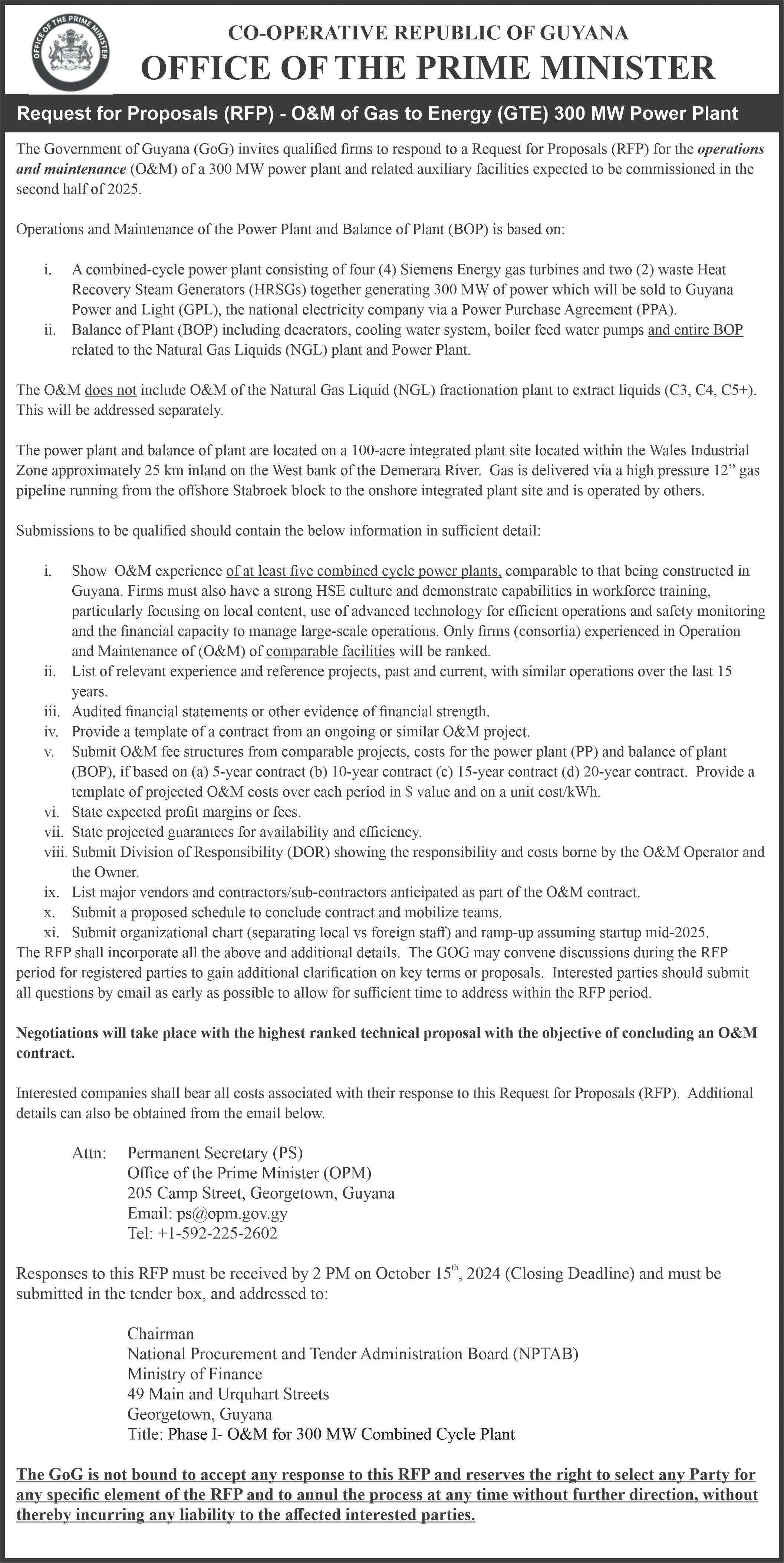


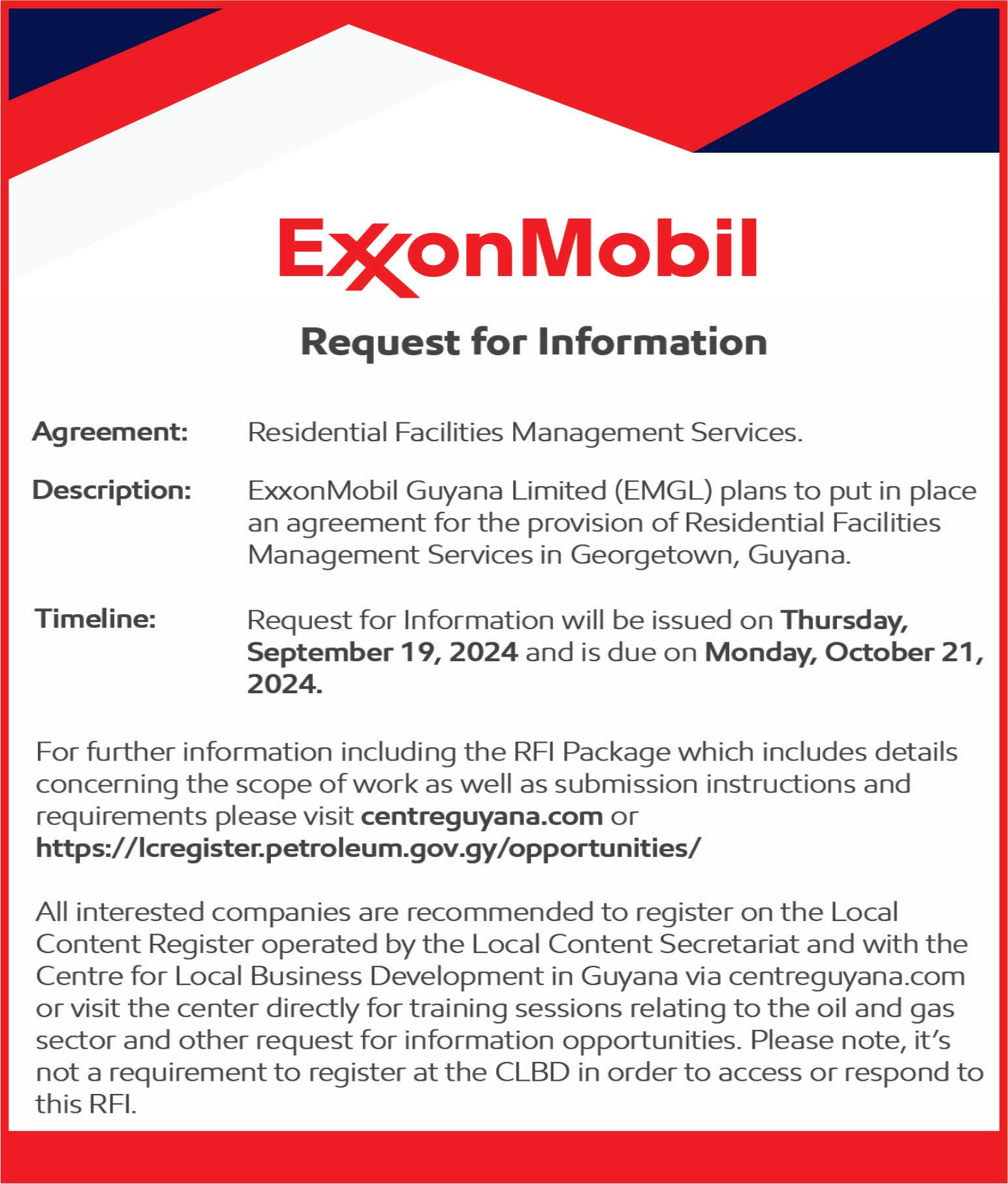





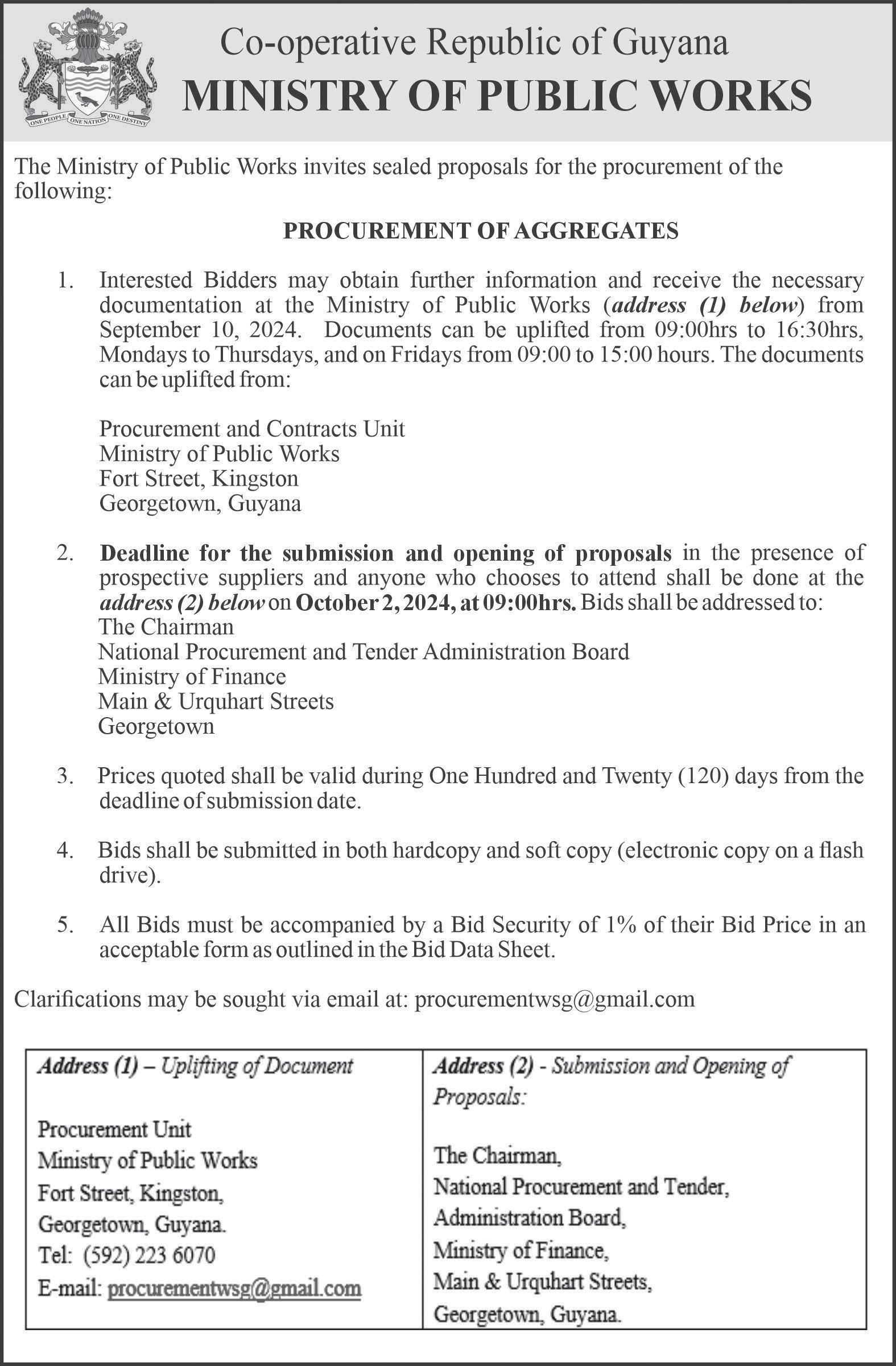









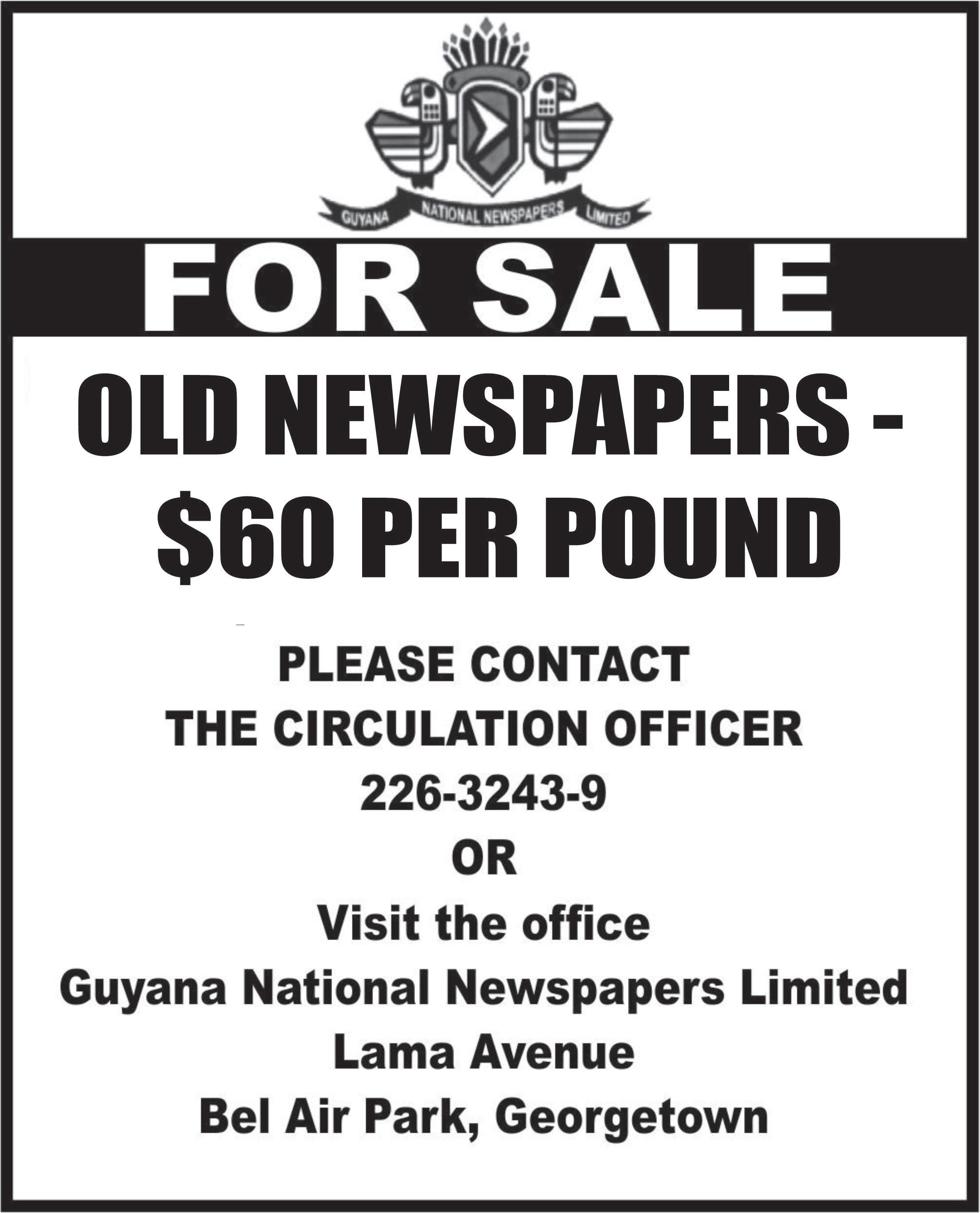


















I’m afraid you’ve got a bad egg, Mr. Jones. Oh no, my Lord, I assure you! Parts of it are PUNCHvol.cix,excellent!p.222. 1895

Dear Student,
Welcome dear reading friend. To focus on the chronological sequence of events stated or implied in a passage, you need to know how to relate text to document and make inferences also. Sometimesthe document is a jumbled list of main events which you are asked to reorder chronologically.Many texts refer to a sequence of events, and, for your understanding, you need to constantly refer to the main text to find out when exactly the various events took place. Be wise.
Love you.
THE PASSSAGE
A.. Paraphrasing the written word
Reminder: Paraphrasing simply means creating a summary or recapitulation of a piece of literature without the intention to enhance it.
Your aim is to put an author’s idea into your own words which is a useful way to relay the author’s ideas to your audience.
You will find the following elements in a good paraphrase:
● totally different words and sentence structure from the original.
● the name of the original author and text.
Paraphrase the following poem by: 1) simply using your own words, 2) capturing its essential information, 3) looking it over to see if you tried to embrace the powerful symbolic effect of the original.
Christina Rossetti 1830–1894
Does the road wind up-hill all the way?
Yes, to the very end.
Will the day’s journey take the whole long day?
From morn to night, my friend.
But is there for the night a resting-place?
A roof for when the slow dark hours begin.
May not the darkness hide it from my face?
You cannot miss that inn.
Shall I meet other wayfarers at night?
Those who have gone before.
Then must I knock, or call when just in sight?
They will not keep you standing at that door.
Shall I find comfort, travel-sore and weak?
Of labour you shall find the sum.
Will there be beds for me and all who seek?
Yea, beds for all who come.
THE PASSAGE
1).. Responding to comprehen-
sion questions
Note: Reading to show comprehension is reading to show your ability to process the written text, to understand its meaning, and to integrate it says with what you already know. Being successful at reading comprehension means that you are able to rely on two abilities that are connected to each other: 1) word reading and, 2) language comprehension.
Read the following poem carefully and then answer the questions on the basis of what is stated or implied.
Taste of Endless Fruit
1.. When a single kite is left in evening sky and I stand black against its saffron
5.. pulling in the night-covers with a single thread, I think of you.
When chickens search the warmth of a hen’s wings;
10.. When bats break a calm lake like scissors on a warm fabric where a lone fisherman waits alone, on the hill, I think of you.
1.. There is a“single kite” (line 1) left in the sky most likely because (A) the day is spent (B) the lone fisherman waits (C) night covers have descended (D) the other kite owners are asleep
2.. What aspect of the sky does the poet focus on? (A) Size (B) Shape (C) Colour (D) Height
3.. Of whom is the poet most likely thinking in the poem?
(A) An artist at work (B) An enemy in hiding (C) A lonely old man (D) Someone he/she loves
4.. “When bats break a calm lake, like scissors on a warm fabric” (lines 10-11) is an example of (A) simile (B) assonance (C) onomatopoeia (D) personification
5.. The poet’s intention is to (A) describe nature (B) describe the sunset (C) tell us of the lone fisherman (D) tell someone he/she is missing him/her 6.. Which word best describes the poet’s tone? (A) Caring (B) Serene (C) Nostalgic (D) Solemn
THE PASSAGE
2).. Responding to comprehension questions Read the following extract carefully and then answer the question set.
I never dreamed England would be like this. So cheerless. Determined, I held my breath but still could hear no birdsongs. The room was pitiful in the gray morning light. I thought it looked rundown last night but daylight was happy to show me more of its filthy secrets. Plaster missing from a bit of the wall. Jagged back lines of cracking everywhere… I opened my trunk. The bright Caribbean colours of the blanket the old woman had given me in Ochi leaped from the case. The yellow with the red, the blue with the green commenced dancing in this dreary room. I took the far-from-home blanket and spread it on the bed.
1.. What two things are contrasted in paragraphs 1 and 2?
2.. Identify one example of personification in paragraph 2.
3.. What effect did the blanket have on the environment?

MANY of my patients with decayed or chipped front teeth come into the dental office and hold their hand over their mouth or use a closed-lip smile to conceal their unsightly teeth. Even when they talk or smile after their dental problem has been corrected, they leave the office still holding their hand over their mouth or using a tightlipped smile. In addition to improving the appearance of their teeth, they need to relearn how to smile properly to project their new image.
I believe that a beautiful smile can serve to radiate health and self-confidence and bring good things to our lives. The fact is that when we smile, most of our facial muscles are utilised in an upward fashion, and this is usually an uplifting experience.

A teaching programme of smile exercises is strongly indicated. The results can be as valuable to the patients as the dental work itself. The exercises not only improve smiles by showing off their new teeth but also refine their facial appearance. Patients have noticed that an improved smile brought about by cosmetically correcting teeth and performing smile exercises has resulted in greater self-confidence and success in both their personal lives and careers.
The exercises are as follows: each morning, stand before the mirror and go through these steps.
1. Hold face in repose just before smiling.
2. Move the mouth to a small one-quarter smile and hold it for ten seconds.
3. Move to half a half smile and hold it for ten seconds.
4. Move to a big, full smile and hold that for ten seconds.
5. Slowly reverse back to a small smile.
This process should be done back and forth for at least five minutes. During this time, try to maintain a well-formed smile. This exercise must be done in a controlled fashion and employs two different principles of physiotherapy: isotonic and isometric exercises. Through isotonic exercises, the muscles are used repeatedly throughout their entire range of movement. They are brought into use slowly and gradually, increasing tension to the maximum, held taut, and gradually relaxed again. Done properly, this will be the most important smile exercise a patient can perform. This simple exercise is the best way to develop and control facial muscles to get that beautiful smile.
The second exercise is an isometric exercise and involves the closing of the smile against the resistance of the fingers, increasing the tone and strength of the muscles around the mouth. Make a big, full smile and hold the corners of the mouth firmly with the index fingers of both hands. Slowly close the lip back to no smile, against the resistance of the finger.
These exercises contain complementary components. Hence, it is important to have both exercises performed for maximum benefit. They should be done for 30 days. The exercises may seem unnatural; this is a normal response.
During this period, the mind consciously and unconsciously evaluates various facial configurations for the most attractive and appearing smile possible. The patient will also be familiar with how they look when they flash a smile and become aware of the effects that a charming smile has on others.

